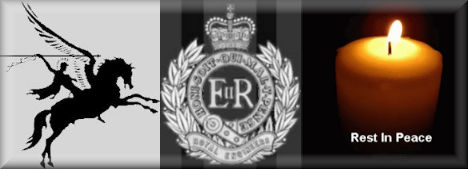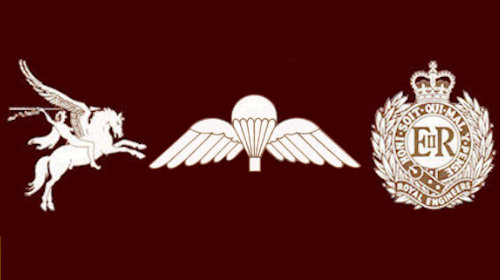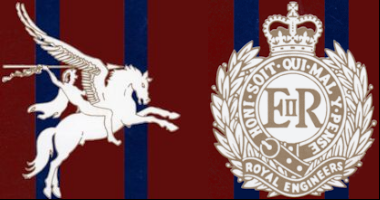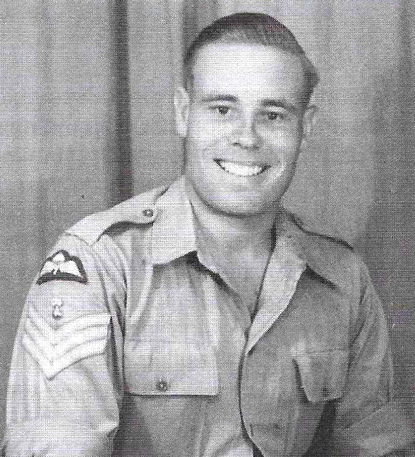
Roll of Honour
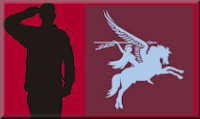
Harold Padfield
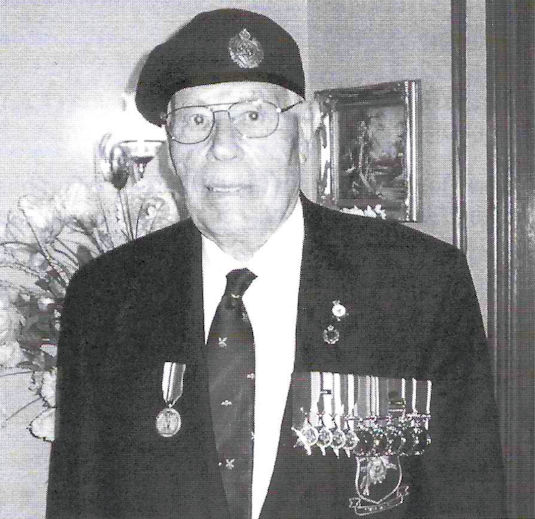 |
It is with much sadness that the Arnhem Veterans Club and the Arnhem 1944 Fellowship announce the death of Harold Padfield aged 93 on 13th December 2014. Harold was born in Holcombe, Somerset on 12th October 1921 and was the eldest of four children. His father was a coal miner and during the General Strike of 1926 he found work at Tilmanstone Colliery in Kent and the family uprooted from Somerset to Kent. Here he spent his formative years but in keeping with so many young people in the 1930's soon had to find a job and in 1936 he found his first job as a gardener on Lord Guildford's Estate. But Harold felt a gardening job was not for him and in 1936 took and passed the tests to join the Royal Engineers as a bugler. So in September 1936 Harold reported to the RE Barracks at Chatham — the start of a long association with that Corps. By the time he reached 18 Harold passed into adult service and started to be trained as a fitter. After the war broke out in 1939 he served in a number of various units until soon after his 21st birthday in 1942 he volunteered for airborne forces and passed the necessary tests, went to RAF Ringway and won his wings and red beret.
|
In early 1943 Harold together with ten other newly qualified parachute engineers was sent to North Africa as reinforcements for the 1st Parachute Squadron RE then serving in Tunisia as part of the 1st Parachute Brigade. He survived several months of hard fighting here before the campaign ended and Harold then took part in the airborne invasion of Sicily in July 1943 and the seaborne invasion of Italy. In keeping with the rest of the 1st Airborne Division the Squadron came back to England in late 1943 to prepare for the invasion of mainland Europe in 1944.
The Squadron was billeted in the Lincolnshire village of Donington and several happy months were spent here preparing for forthcoming operations. It was during this time that Harold was promoted to Lance Sergeant and the Squadron was briefed on their role in Operation Market Garden which was going to start on 17th September 1944. The engineer's task at Arnhem was basically to make sure that the three bridges selected as objectives were free of explosives and taken intact. Harold's troop was sected to go to the Arnhem road bridge. He reached the road bridge in the late evening of the 17th having first checked out the pontoon bridge and found that sections were missing and explosive charges in place on some of the sections that remained. These were cut off and dumped into the Rhine before going to the road bridge
The 1st Parachute Brigade held the north end of the bridge only making it difficult to search it for explosive charges. Consequently it was decided to occupy the north end of the bridge area and Harold was sent by Lieutenant Simpson to search some large buildings close to the road which ran over the bridge but on the east side. These turned out to be some school buildings which became central to Harold's Arnhem experiences. The building was the van Limburg Stirum School and held a commanding position covering the north end of the bridge and the approaches to it from the south and east. The engineers were destined to spend the rest of their time at Arnhem here defending the school house against many attacks with nothing bigger than a bren gun. The building was held until the morning of 20th September when German tanks started to blast it to rubble and the defenders were running out of ammunition. There were many instances of bravery that Harold was involved with here and have been covered in publications that he helped with or even wrote himself. However, once incident that affected Harold deeply is as follows: with ammunition virtually exhausted and the building in ruins the orders came to cease firing and surrender. On Harold's instructions Sapper Butterworth put a white handkerchief on the end of his rifle and went forward waving it. As he was walking forward a German opened fire and shot him in the legs. A German officer who witnessed this incident shot the soldier who had opened fire. This officer told the engineers to come forward saying, 'You are very brave but very foolish.' Harold said he considered they were unfortunate. Sadly Norman Butterworth died from the wounds he suffered as a result of this incident in February 1945. |
|
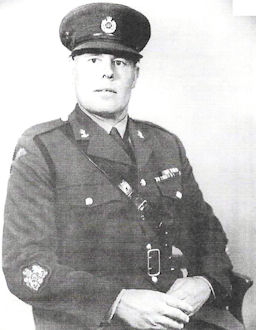 |
As some of the defenders including Harold were marched off to a builders yard in eastern Arnhem to be searched a German Propaganda Kompanie photographer took several photographs of which Harold is the star in a couple and one of these is currently displayed life size in the Airborne Museum Hartenstein in Oosterbeek. Harold spent the rest of the war in captivity at camps Stalag 12A and 18C, he walked out of the camp in late April 1945 and spent two weeks in the Austrian Alps trying to reach Allied lines. He eventually achieved this on the day the Germans officially surrendered, but he was 4 stones lighter than when he left the UK in September 1944. Harold returned to the UK and after some leave resumed his career in the Army finishing up as RSM of 107th Field Regiment RE in Liverpool, retiring after 27 years' service in 1963. However an idle life was not for Harold and he started work as Estate Foreman at St John's College in Oxford in October 1963, he remained here in a number of different jobs but each with more responsibility till retiring again in 1986 when he was 65. |
He found the time to meet, court and marry Beryl and they were blessed with a son David who in turn presented them with two grandchildren.
Over the years Harold was extremely proud of his engineer roots and was a frequent visitor to Arnhem and also took part in a number of documentaries on Operation Market Garden. In 2006 he was asked to join the Committee of the Arnhem Veterans Club and a few months later became their Secretary, a post he held until September 2014.
Numerous awards came his way but one of the proudest was when 23 Air Assault Regiment RE named the bar in the Sergeants Mess the Harold Padfield Bar. I first met Harold in 2000 when I wanted to find out about his role in the defence of the school at Arnhem and we became firm friends from then on.
Harold helped greatly with a booklet on the defence of the school house aptly named 'With Nothing Bigger than a Bren Gun' and in October 2014 a book on his life story called '12 Mules and A Pegasus' written by Harold was also published.
I would like to end by a story that used to get Harold and I chuckling whenever we recounted it. I mentioned earlier on the photograph taken of Harold after his capture and on the official opening after the refurbishment of the Airborne Museum in September 2009 Harold and I were having a few beers together. After an hour or so he mentioned that he'd not been round the Museum yet. Sadly at that time Harold was suffering from peripheral vision problems so I offered to escort him round even if it meant carrying him. Anyway we were in the room with the life size photo and we were just generally chatting about that time, when this well spoken lady with her equally well spoken husband came in and after listening for a while said 'You seem to know a lot about that photograph.', I replied 'Know about it he's bloody in it!' much to Harold's amusement.
Sadly after this Harold's eyesight continued to deteriorate but in true airborne style he fought as best as he could and then in early 2014 he was dealt another body blow by being diagnosed with cancer. Perhaps he fulfilled a last wish by laying flowers with the 'flower children' at the end of the Commemorative Service in the Cemetery at Oosterbeek in September 2014. Harold was admitted to a care home and sadly died on 13th December 2014. His last wish was for his ashes to be buried behind Norman Butterworth's grave and the CWGC have already agreed to this. Our thoughts and sympathies go out to this son and family at this sad loss. I have also lost an airborne brother and I shall miss him tremendously. As John Frost said of the airborne engineers at the road bridge, "They are far better at killing the Germans than engineering tasks"! |
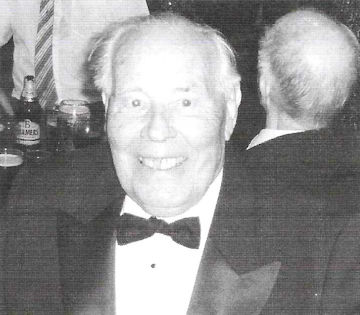 |
